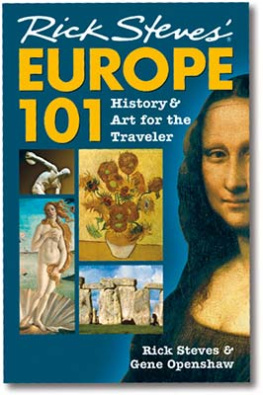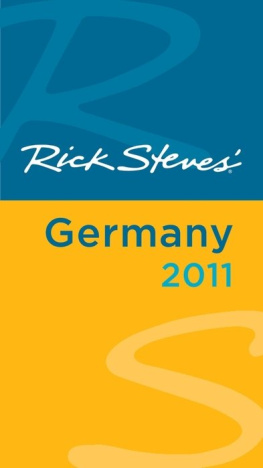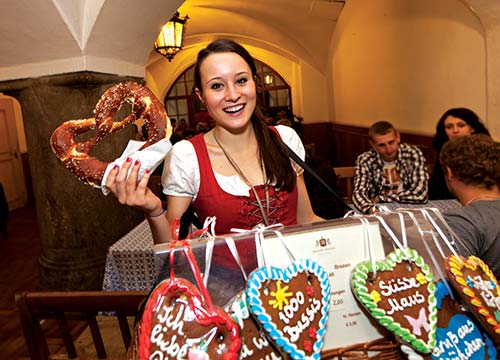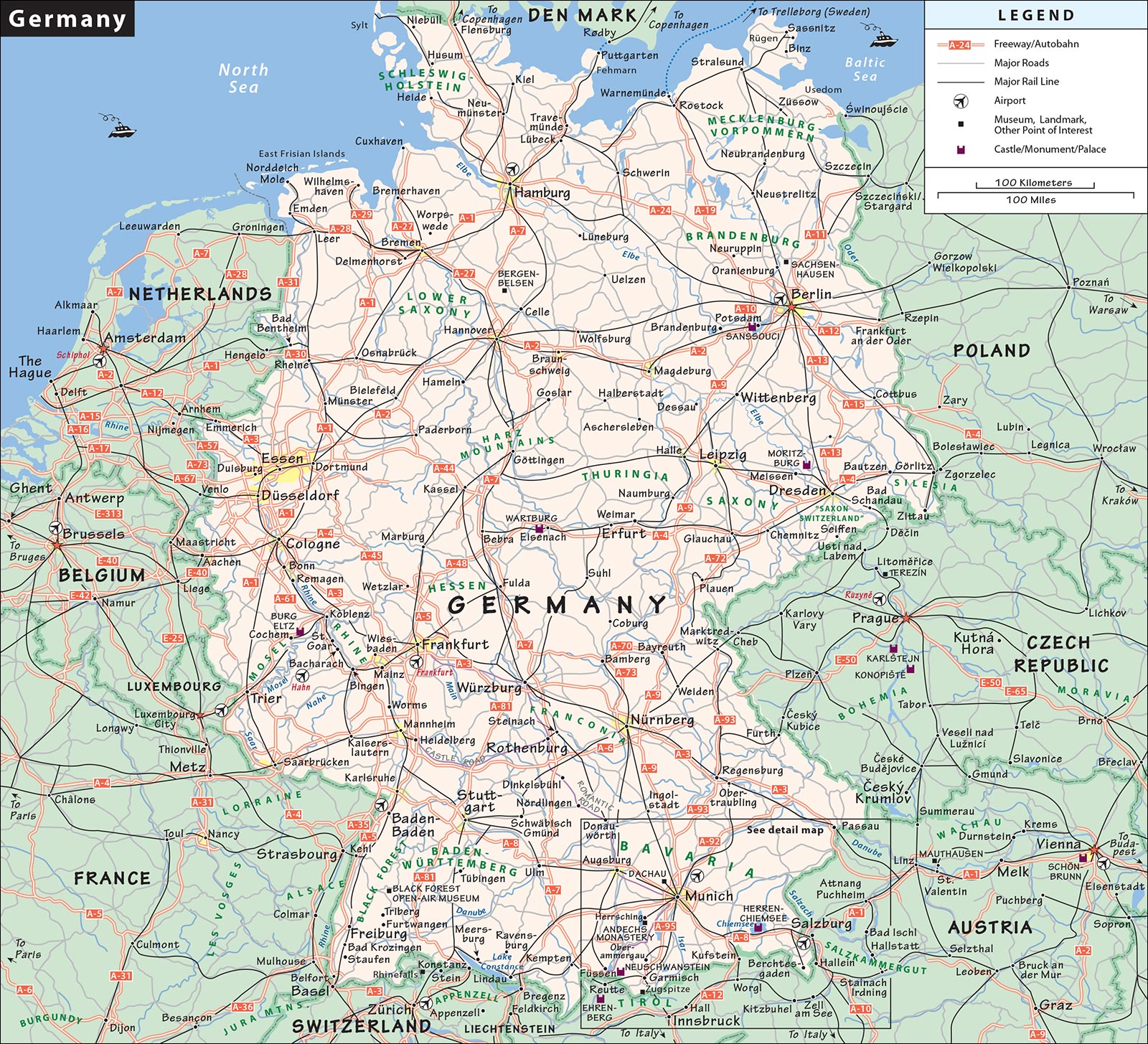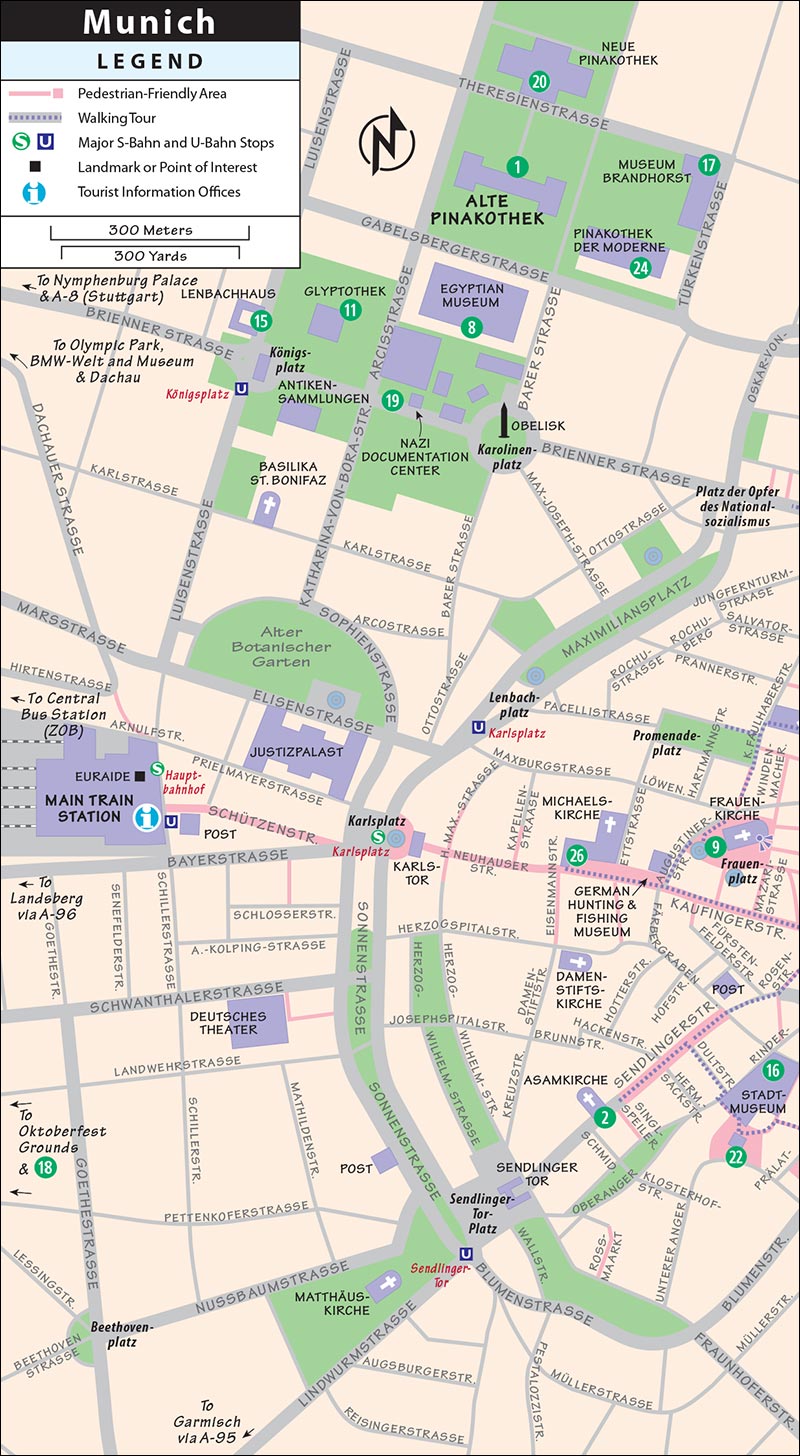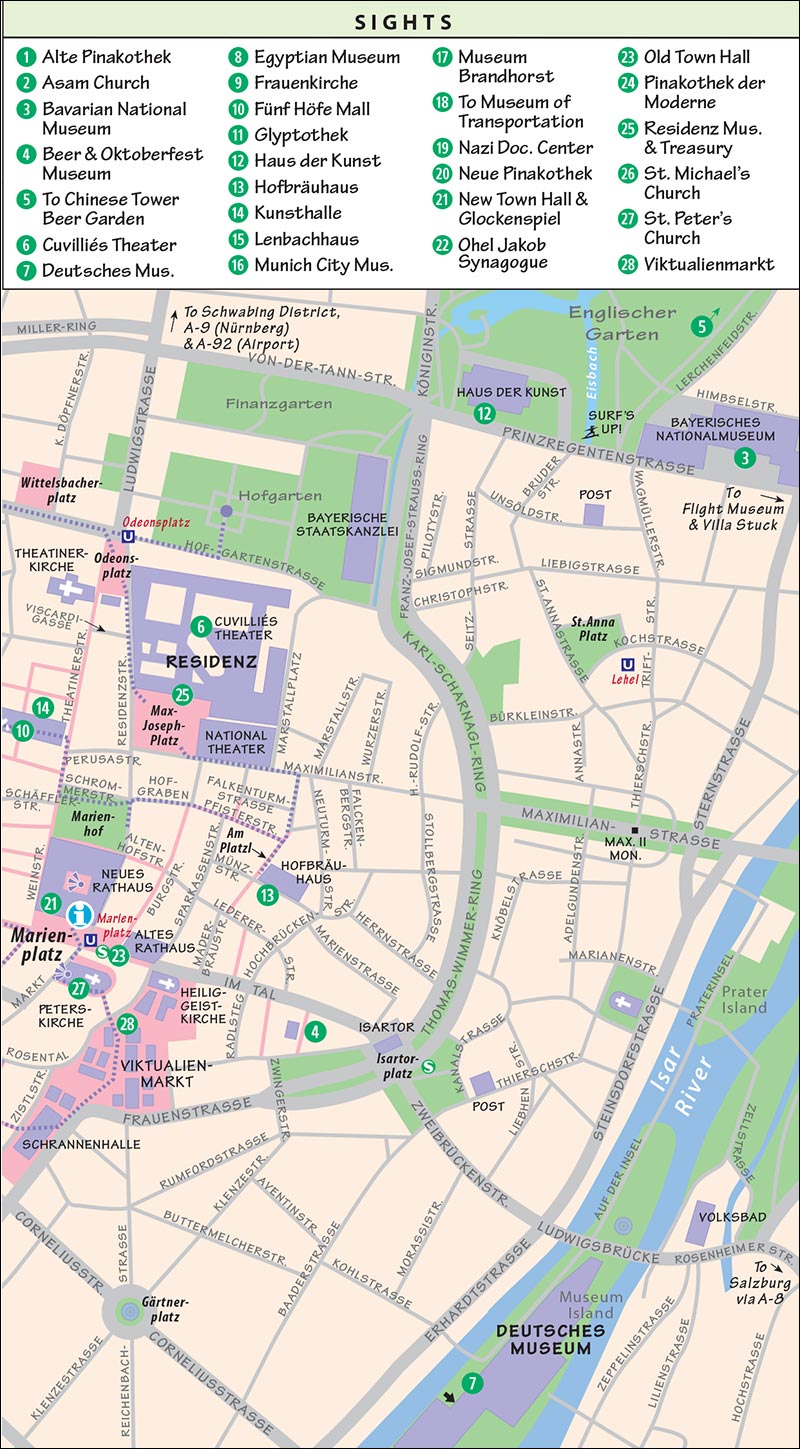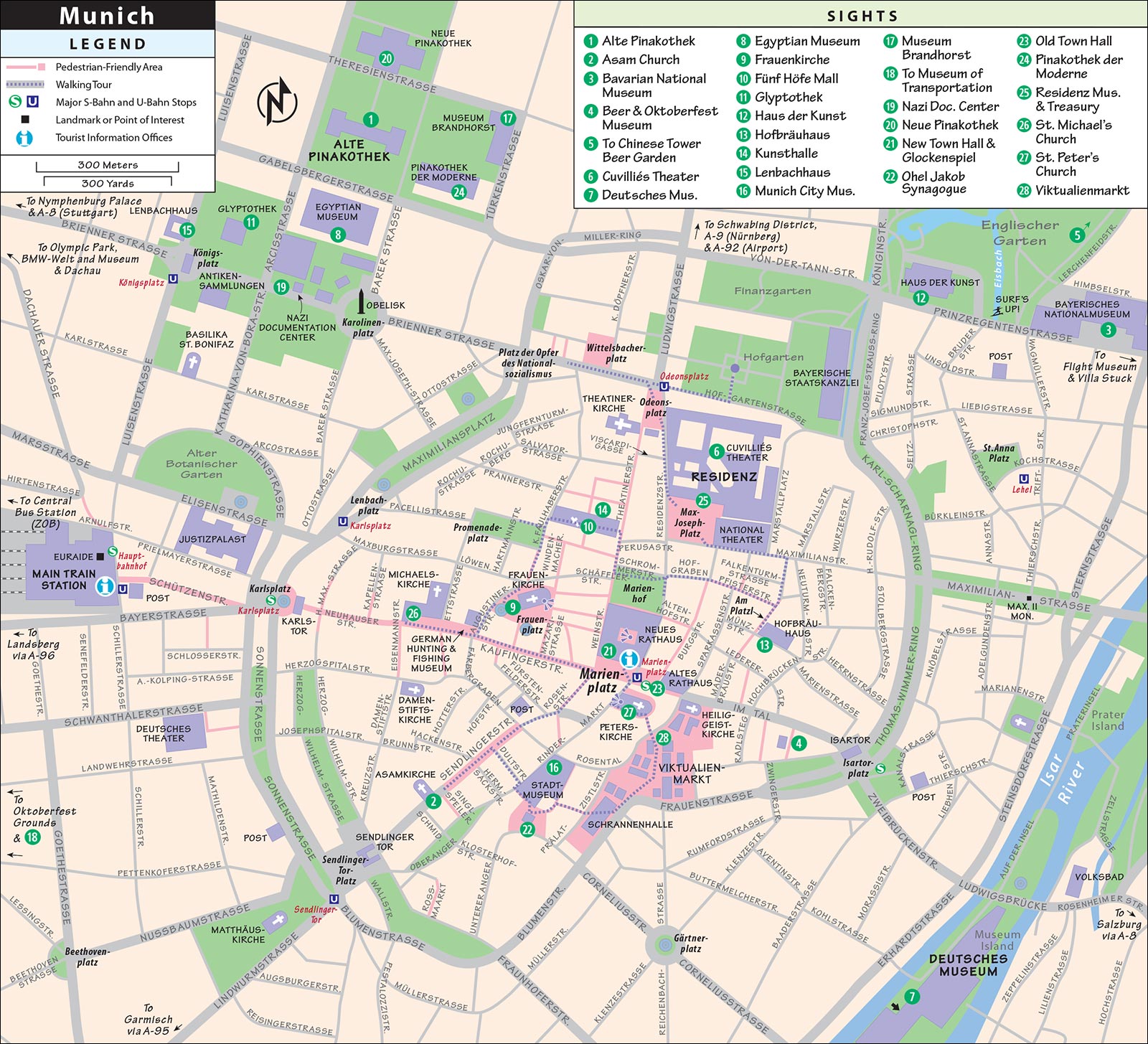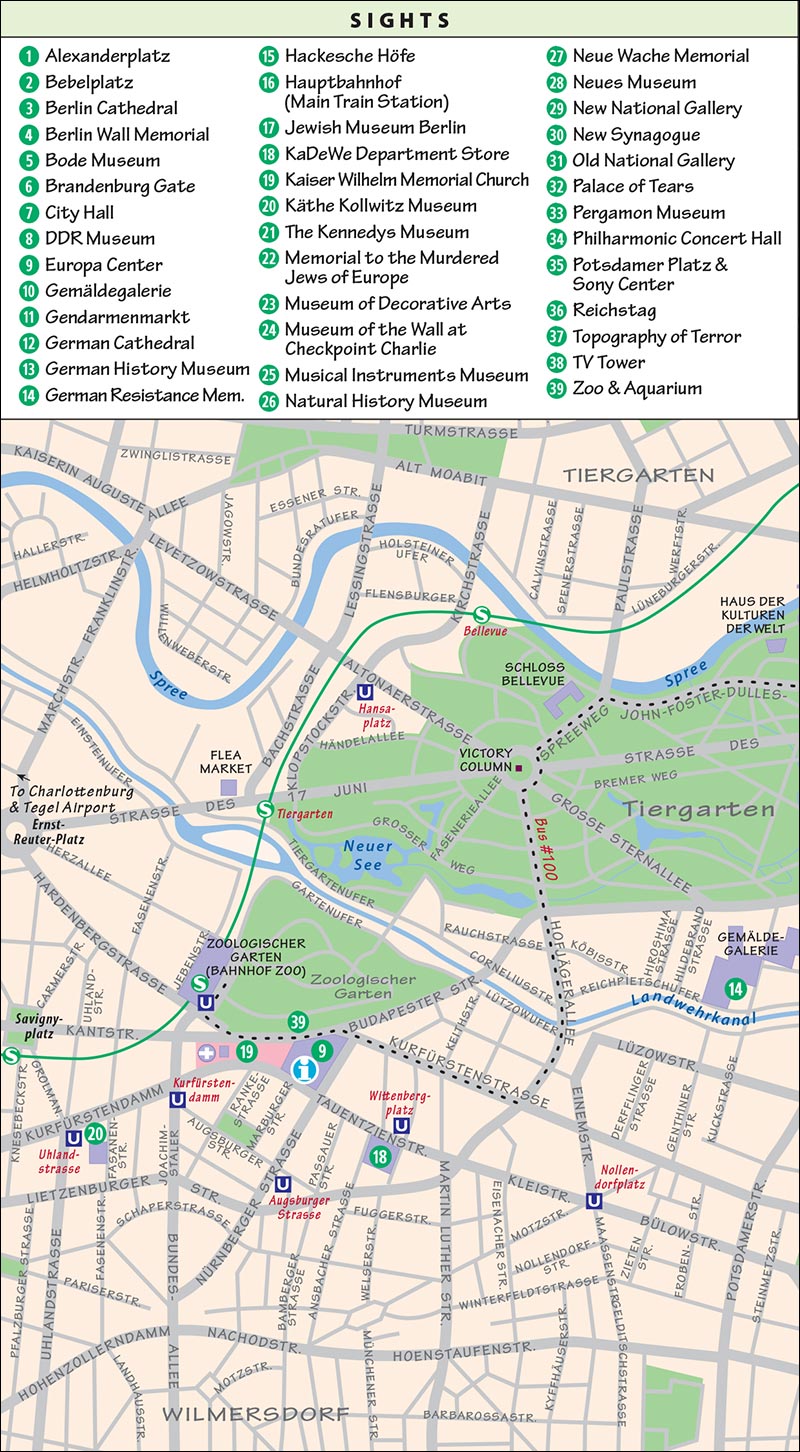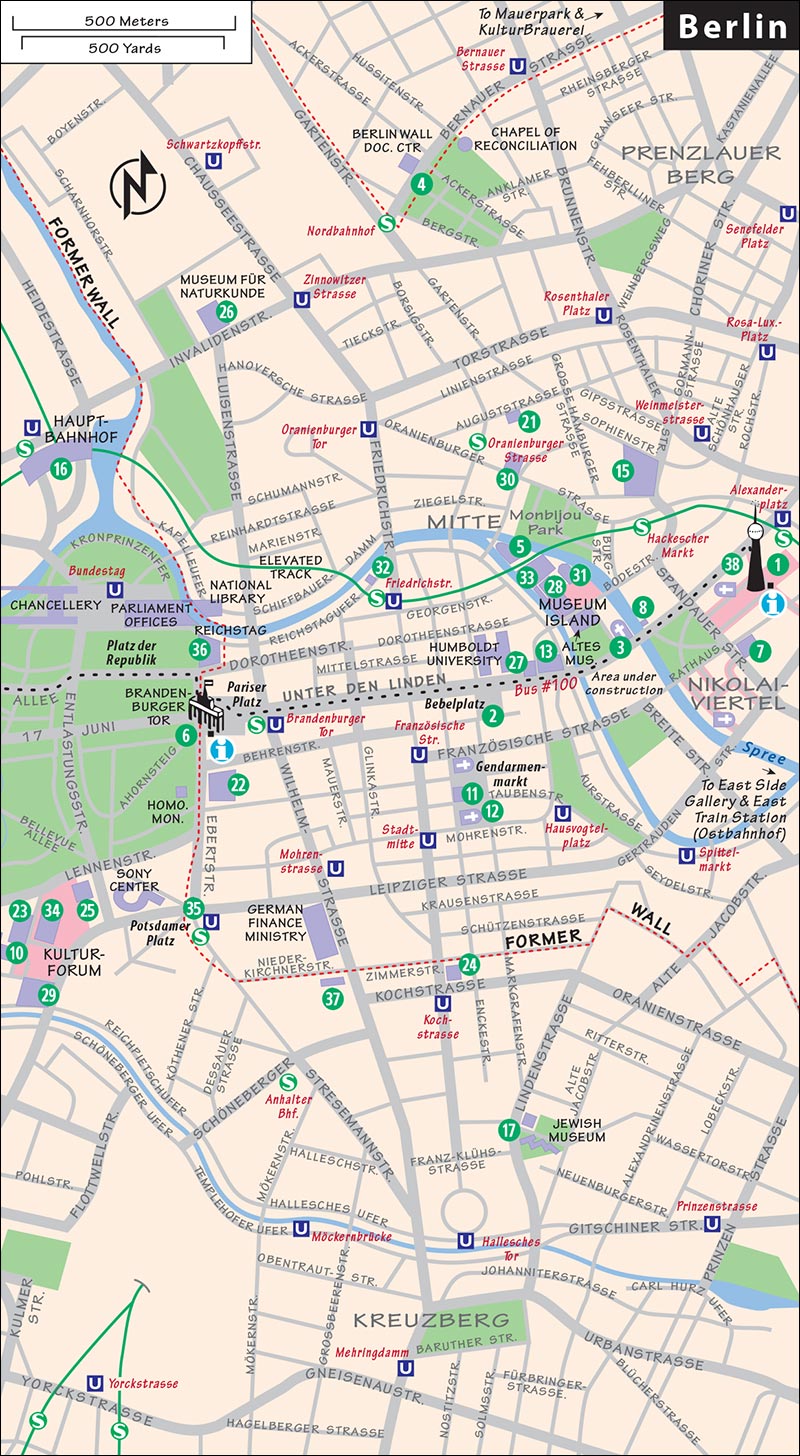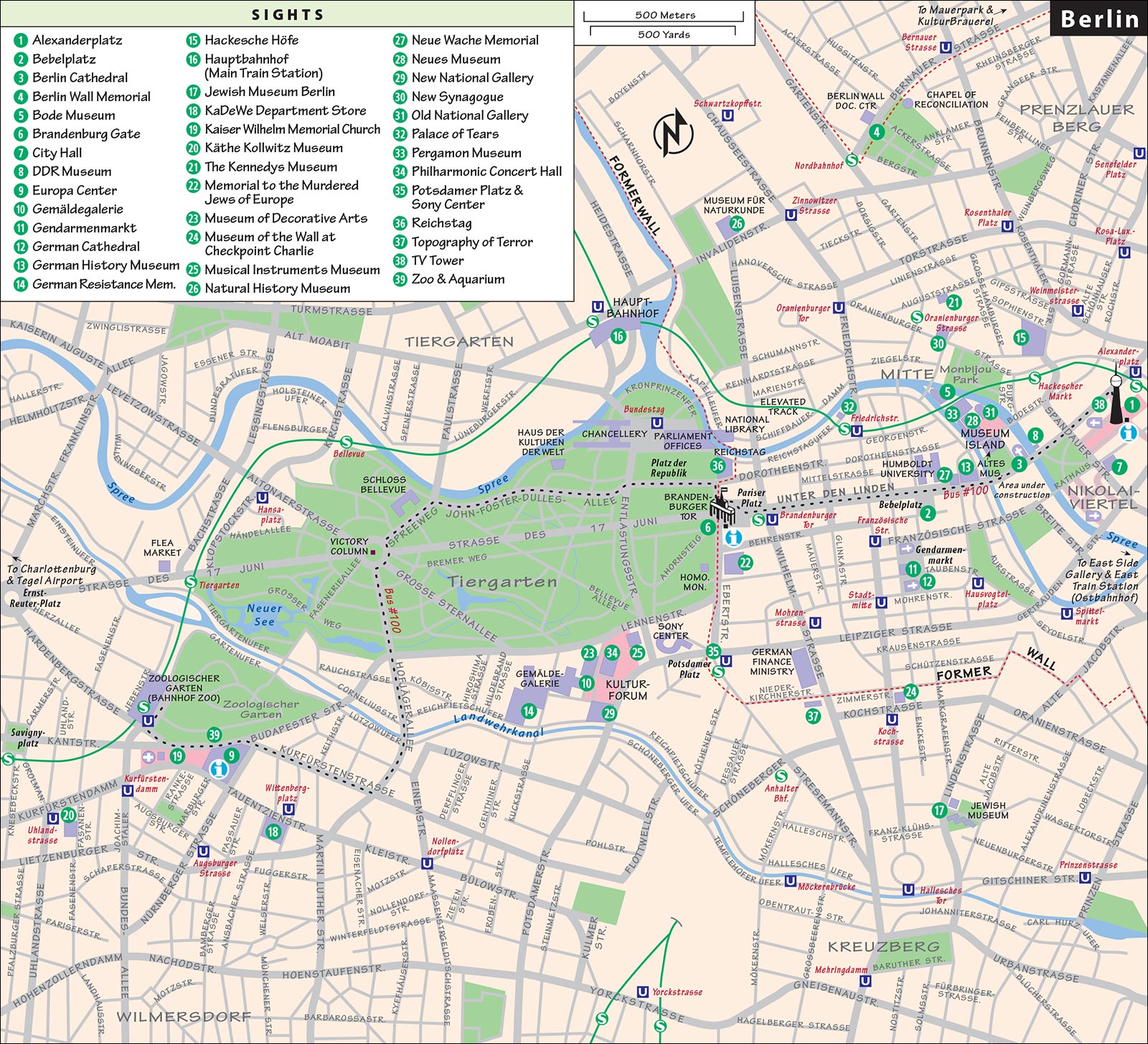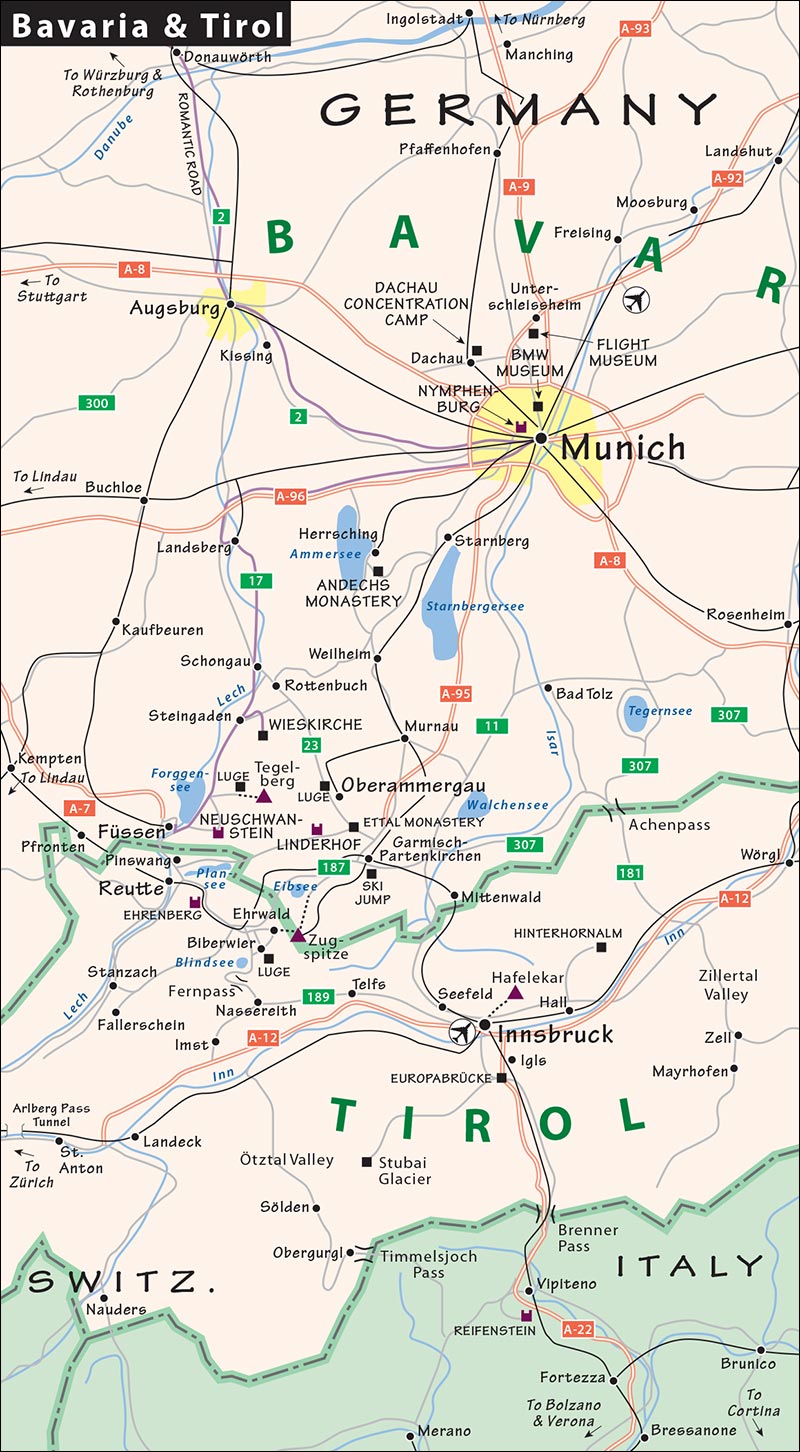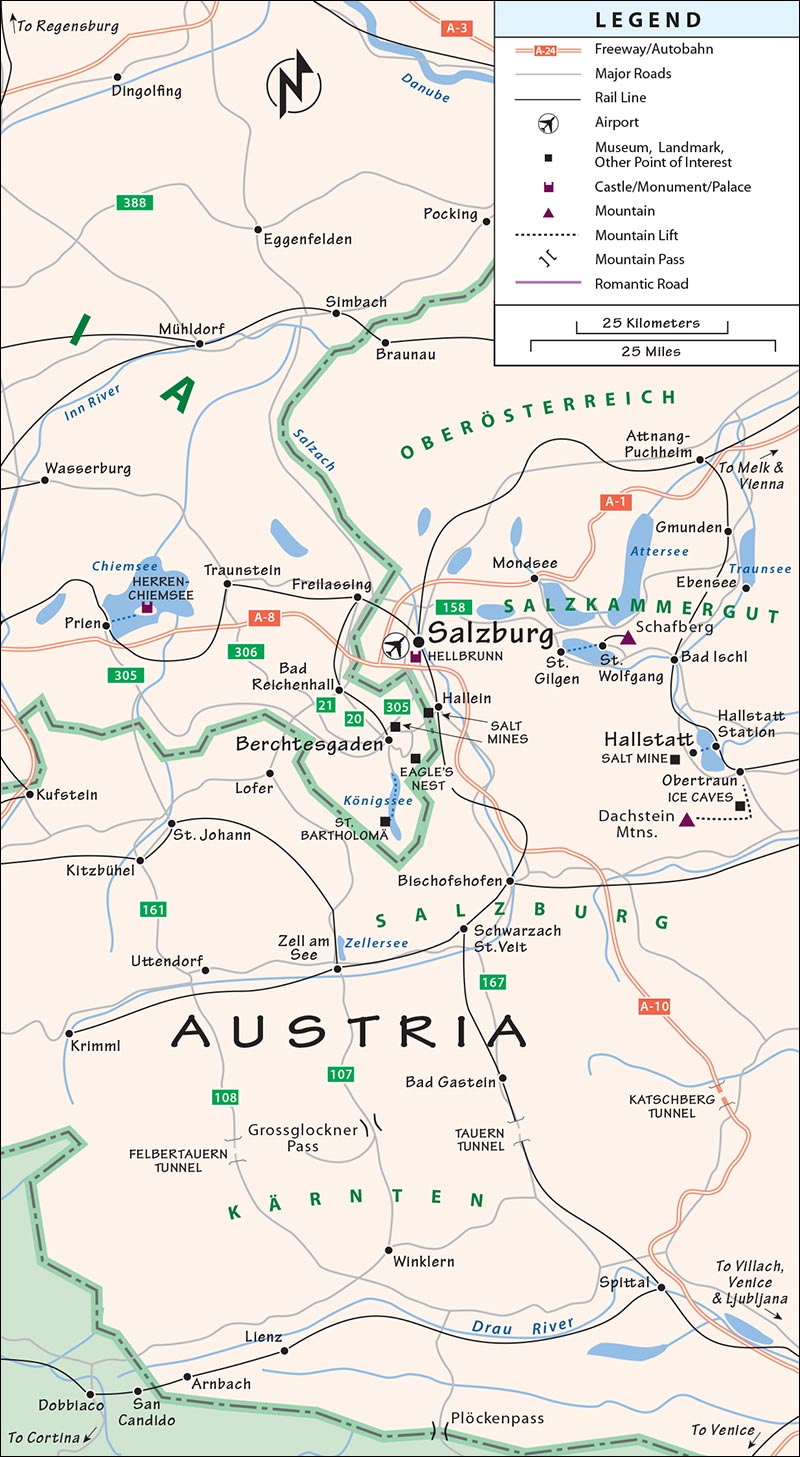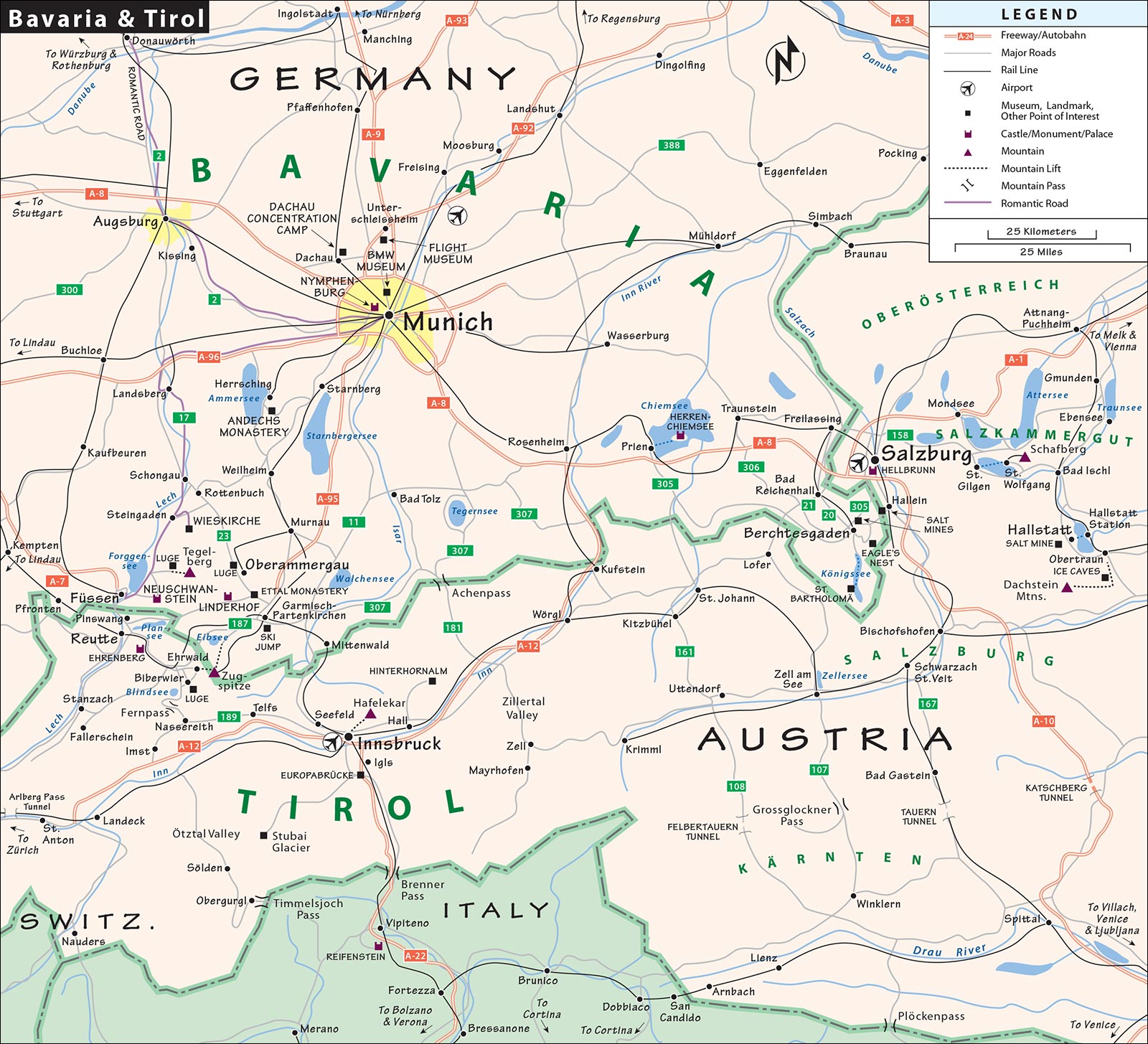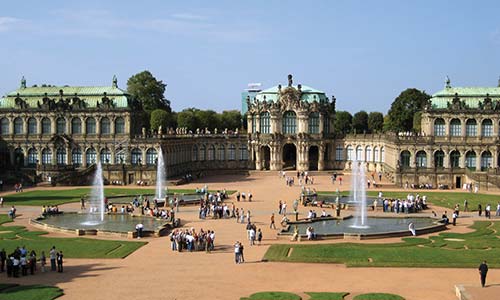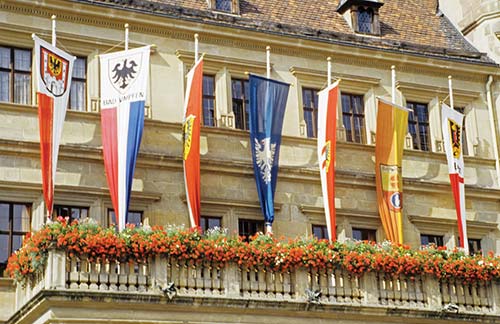Contents
Contents
Rick Steves
GERMANY 2017
Deutschland
Germany is blessed with some of Europes most high-powered sights. Theres spectacular scenerythe jagged Alps, flower-filled meadows, rolling hills of forests and farms, and rivers such as the raging Rhine and moseying Mosel. Germany has hundreds of castles, some ruined and mysterious; others stout, crenellated, and imposing; and still others right out of a Disney fairy tale. In this land of the Protestant Reformationand Catholic Counter-Reformationchurches and cathedrals are another forte. Austere Lutheran houses of worship tower silently next to exuberantly overripe Baroque churches dripping with curlicues.
Deutschland is energetic, efficient, and organized. Its Europes muscleman, both economically and wherever people line up (Germans have a reputation for pushing ahead). Its the European Unions most populous country and biggest economy, with a geographic diversity and cultural richness that draw millions of visitors every year.
Germanys dark side is recalled in eerie Nazi remnantsstern office buildings, thoughtfully presented documentation centers, haunting concentration campsand chilling reminders of the Cold War, embodied in a few quickly disappearing sites, such as the scant fragments of the notorious Berlin Wall. And of course there are the cultural clichs, kept alive more by tradition-loving Germans than by tourist demand. The country is dotted with idyllic half-timbered villages where you can enjoy strudel at the bakery or sip a stein of beer while men in lederhosen play oompah music. Peruse a wonderland of chocolates, stock up on Hummels and cuckoo clocks, and learn how to polka.
Germany Almanac
Official Name: Bundesrepublik Deutschland, or simply Deutschland.
Population: Germanys 82 million people (more than three times the population of Texas) are largely of Teutonic extraction (about 90 percent), plus a small but significant minority (2.4 percent) of Turkish descent. A third of Germans are Catholic, and a third are Protestant. About 4 percent are Muslim; the rest are unaffiliated.
Latitude and Longitude: 51N and 9E. The latitude is similar to Alberta, Canada.
Area: At 138,000 square miles, Germany is about half the size of Texas. Its bordered by nine countries.
Geography: The terrain gradually risesfrom flat land in the north to the rugged Alps in the south, culminating in the 9,700-foot Zugspitze mountain. The climate is temperate.
Biggest Cities: The capital city of Berlin has 3.5 million people, followed by Hamburgs 1.8 million and Munichs 1.5 million.
Economy: With a GDP of $3.8 trillionsimilar to Americas Midwest states combinedGermany is Europes largest economy. Still, the GDP per capita is approximately $46,000, or about 20 percent less than Americas. Germanys strength is in technology and manufacturingexporting machinery and other high-quality items that developing countries (including China) want to buy. Its one of the worlds most advanced economies, producing steel, cars, chemicals, pharmaceuticals, consumer electronics, and more. Germany also has around 1,300 breweries (Bavaria boasts about half of them), but much of the production is consumed domestically. Germany trades almost equally with a half-dozen neighboring countries and the United States.
Since the 1990 reunification, Germanys economy has been burdened by the cost of integrating the former East Germany into the modern West. Germanys expensive social security system gets even costlier as the population ages. Thanks to powerful trade unions, workers get good benefits.
Government: Germanys chancellor, similar to a prime minister, is not elected by the people but is the head of the lead party in parliament. Angela Merkel became the first woman to hold that office in 2005. Merkel, a conservative, leads a coalition government that is expected to continue her business-friendly policies through the next federal election, in fall 2017. The less-powerful president (currently Joachim Gauck) is elected by parliament. The legislative branch includes the Bundestag (currently 630 seats, elected by both direct and proportional representation) and Bundesrat (69 votes by officials of Germanys 16 states).
Flag: Deutschlands flag is composed of three horizontal bands of (from top to bottom) black, red, and gold.
The Average Deutscher: The average German is 46 years old8 years older than the average Americanhas 1.4 kids, and will live to be 80. He or she lives in a household with two other people, may either own or rent their house (only about half prefer to own), and watches 3.75 hours of TV a day. The average German drinks a pint of beer every 32 hoursslightly less than the average Irish or Czech.
All of these traditions stand at sharp contrast with the real Germany of today. Despite its respect for the past, this truly is a 21st-century country. At the forefront of human progress, Germany is a world of high-tech trains, gleaming cities, social efficiency, and world-class museums celebrating many of historys greatest cultural achievements.


